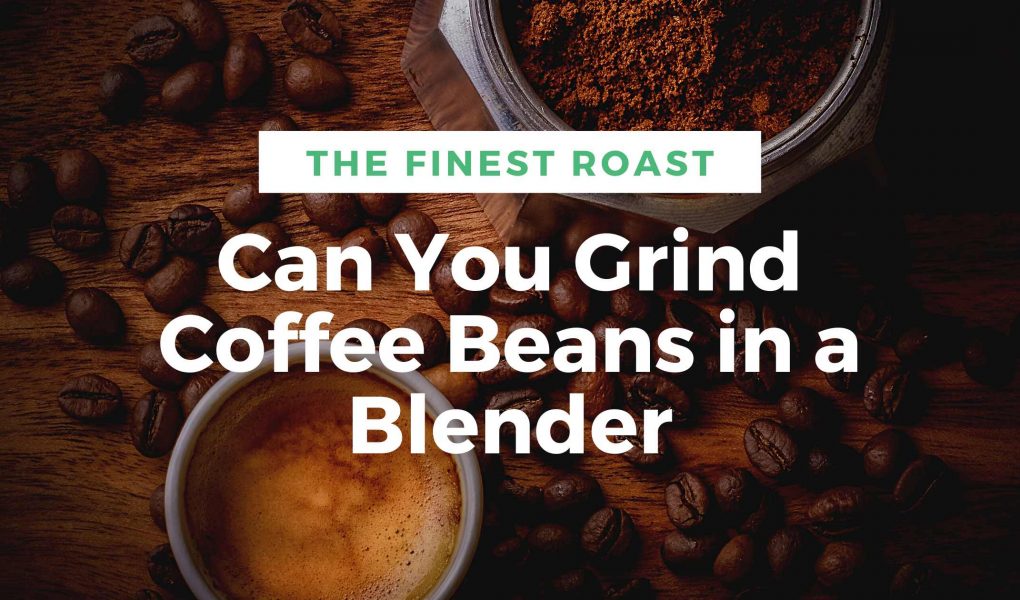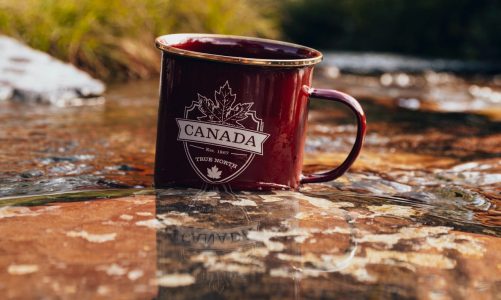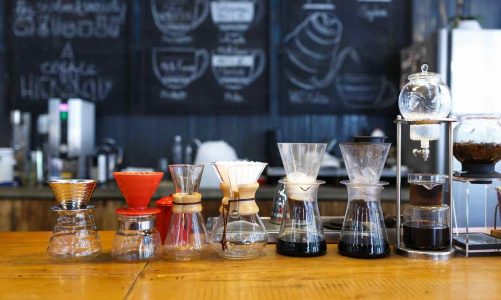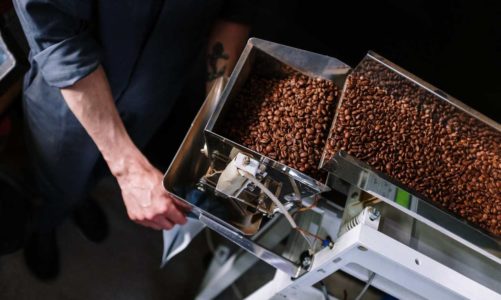The short answer to can you blend coffee beans in a blender is yes. Whilst there are many methods and potential downsides to this, it can be done It is always best to use a coffee bean grinder, but as a last resort, you can use a blender to grind coffee.
With a lot of coffee enthusiasts switching from brewing pre-ground coffee to grinding the coffee beans on their own. Having your own grinder at home is such a godsend. The beauty about grinding your own coffee is the enhanced flavors, heightened aromas, and more freshness in the coffee.
But what would you do if your grinder suddenly breaks before you make your morning coffee, or you don’t have any grinders at home? This might not seem like a challenge to most people, but if you only order coffee beans whole, you would physically not be able to make a coffee. Which could be a disastrous way to start the day.
Thankfully, there are certain alternatives that you can use, such as blending coffee beans in a blender. It might not the most practical solution, but it works.
Related: What is a conical burr grinder?
Can You Grind Coffee Beans at Home in a Blender?
You can definitely grind coffee beans at home without a coffee grinder. There are some people that are known to grind coffee with a knife, yes, you can actually do that too, although that would require a lot more skill. But there are many practical “hacks” to grind your coffee beans. The most popular method is to use a blender.
Much like the grinder, blenders have the same motor-driven blades that can cut food into bits and pieces depending on the size you want and depending on the blender you have. The great thing about blenders is that they come in different sizes and blade options.
You have to keep in mind though that although you can definitely use a blender as a coffee bean grinder alternative, you have to be careful because blenders have the tendency to overheat the oils in your coffee. This can completely ruin the flavor of your coffee and change your coffee experience entirely.
To avoid your coffee getting ruined easily, make sure that you only grind in a short, quick burst instead of letting the blades run continuously. These short bursts create the perfect coarse grind which is ideal for the French Press. Find out more about the French Press here.
How to Grind Coffee Beans in a Blender
To grind coffee in a blender, you have to follow certain processes. You can’t just throw the coffee beans in and let the machine do the work.
- The first thing that you need to do is check your blender to see if it has a “grinder” setting. If it does not have that setting, choose a medium-high speed. This will give you a coarse coffee grind.
- Measure or weigh your coffee beans and place them in the grinder. Remember to cover the blender with the lid to avoid beans flying all over the place.
- Grind your coffee beans using the pulse technique. This means that you only grind in a short, quick burst instead of letting the blades run continuously. Some blenders will have this setting built-in, but you should still do it manually or watch it to make sure you don’t overdo it.
- In order to get an even coarse grind, try to tilt the blender from side to side while grinding. This will allow you to get the best consistency of the coffee grounds.
- Once you reach the desired grind, empty your coffee contents to start brewing. If you want to grind each set of beans per cup, just repeat the same process again.
Grind Consistency is Key
When it comes to getting that perfect cup of coffee, the coffee grind should be consistent. When you have a consistent grind, you don’t only produce and extract the finest flavors from your coffee, but you also guarantee the same coffee taste every time.
When you have an inconsistent grind, either over-extracting or under-extracting, you tend to get a burnt and chalky aftertaste. If you often seem to get this taste and are unable to reach the desired consistency, you can always switch back to pre-ground coffee.
Keep in mind that the grinding process affects the taste of your coffee. So when you grind coffee with a blender, it’s important to remember that you need to do it in small batches, on short pulses, and to a medium coarseness.
If you don’t get it right the first time, just keep practicing until you finally get the process perfected. Using a blender to grind coffee isn’t common, but it can work and people do this every day.
If you want to invest in a coffee bean grinder instead, check these out:
Can You Grind Coffee in a Nutribullet?
Much like the burr coffee grinder and household blender, your Nutribullet also is equipped with components that allow you to grind coffee beans When using the Nutribullet as your coffee grinder, follow the steps in grinding coffee with a blender. Remember, use the “pulse” method – just grind in a short, quick burst instead of letting the blades run continuously.
Best Blenders to Grind Coffee Beans at Home
If you want to purchase a blender for its multi-purpose use but don’t want a coffee bean grinder, you can check out these blenders to grind coffee beans. They are affordable and produce good results.
- Ninja Foodi Power Blender & Processor System with Smoothie Bowl Maker & Nutrient Extractor
- KitchenAid K400 Blender with Tamper
- Ninja Professional 1000-Watt Blender
- Magic Bullet Mini Blender, 7 Piece Set, 200 Watt with Cross Blade
Key Take-Away
Ultimately, you can definitely grind coffee with a blender. Although you have this alternative, don’t forget that the only way for you to achieve the perfect grind is to focus on the consistency of the coffee beans with every grind that you do.
Don’t over-heat or under-heat your coffee beans when you use a blender, grind in short pulses, and where possible, use a coffee grinder for the best results.
When it comes to coffee, the fresher the grounds, the better the taste. Once the coffee is grounded up, it’s already exposed to oxidation and moisture. When your coffee grounds oxidize, they react to the air molecules, which creates an entirely different chemical reaction. The substance that produces the aroma and flavor gets released from the coffee beans once you grind them.





I just did a side-by-side coffee grinding test between a food processor and a blender. Hands down, the blender did a much better job. This was an old fashioned blade up blender. I hear that that blade down blenders do an even better job. Either way, you’ll probably end up with some inconsistency in the grind. To filter out the too fine dust, I just run the grounds through a sieve.